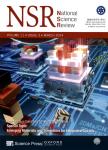Mobility in China, 2020: a tale of four phases
Mobility in China, 2020: a tale of four phases作者机构:School of BusinessCentral South University Institute of Big Data and Internet InnovationsHunan University of Technology and Business College of Systems Engineering National University of Defense Technology WorldPopSchool of Geography and Environmental ScienceUniversity of Southampton School of Mathematics and Big Data Foshan University State Key Laboratory on Blind Signal Processing State Key Laboratory of Management and Control for Complex SystemsInstitute of AutomationChinese Academy of Sciences Chinese Evidence-Based Medicine Center National Clinical Research Center for Geriatrics West China Hospital Sichuan University Big Data Research CenterUniversity of Electronic Science and Technology of China West China Biomedical Big Data Center West China Hospital Sichuan University Tokyo Tech World Hub Research Initiative Institute of Innovative Research Tokyo Institute of Technology
出 版 物:《National Science Review》 (国家科学评论(英文版))
年 卷 期:2021年第8卷第11期
页 面:110-120页
核心收录:
学科分类:0402[教育学-心理学(可授教育学、理学学位)] 0303[法学-社会学] 0710[理学-生物学] 0810[工学-信息与通信工程] 0830[工学-环境科学与工程(可授工学、理学、农学学位)] 1004[医学-公共卫生与预防医学(可授医学、理学学位)] 1002[医学-临床医学] 1001[医学-基础医学(可授医学、理学学位)] 100401[医学-流行病与卫生统计学] 0833[工学-城乡规划学] 10[医学] 0812[工学-计算机科学与技术(可授工学、理学学位)]
基 金:supported by the National Natural Science Foundation of China (91846301, 72088101, 71790615,72025405, 82041020 and 71771213) the Hunan Science and Technology Plan Project (2019GK2131 and 2020TP1013) supported by the National Natural Science Foundation of China (72001211) the Hunan Science and Technology Plan Project (2020JJ5679) supported by the National Natural Science Foundation of China (71901067) supported by the National Natural Science Foundation of China (11975071) the National Natural Science Foundation of China (81773498) supported by the Bill&Melinda Gates Foundation (INV-024911) the National Science and Technology Major Project of China (2016ZX10004222-009) supported by the Bill&Melinda Gates Foundation(INV-024911, OPP1106427, OPP1032350, OPP1134076 and OPP1094793) NIH (PAR-20-185) the UK Foreign,Commonwealth and Development Office (FCDO) the Wellcome Trust(106866/Z/15/Z and 204613/Z/16/Z) the EU H2020 program (MOOD 874850) supported by JSPS KAKENHI (21H04595) partially supported by the Sichuan Science and Technology Plan Project (2020YFS0007) the Shenzhen Basic Research Project for Development of Science and Technology (JCYJ20200109141218676)
主 题:human mobility travel restrictions COVID-19 mobile phone data behavioral response
摘 要:2020 was an unprecedented year,with rapid and drastic changes in human mobility due to the COVID-19 pandemic.To understand the variation in commuting patterns among the Chinese population across stable and unstable periods,we used nationwide mobility data from 318 million mobile phone users in China to examine the extreme fluctuations of population movements in 2020,ranging from the Lunar New Year travel season(chunyun), to the exceptional calm of COVID-19 lockdown,and then to the recovery period.We observed that cross-city movements,which increased substantially in chunyun and then dropped sharply during the lockdown,are primarily dependent on travel distance and the socio-economic development of cities.Following the Lunar New Year holiday,national mobility remained low until mid-February,and COVID-19 interventions delayed more than 72.89 million people returning to large cities.Mobility network analysis revealed clusters of highly connected cities,conforming to the social-economic division of urban agglomerations in China.While the mass migration back to large cities was delayed,smaller cities connected more densely to form new clusters.During the recovery period after travel restrictions were lifted,the netflows of over 55% city pairs reversed in direction compared to before the lockdown.These findings offer the most comprehensive picture of Chinese mobility at fine resolution across various scenarios in China and are of critical importance for decision making regarding future public-health-emergency response,transportation planning and regional economic development,among others.



